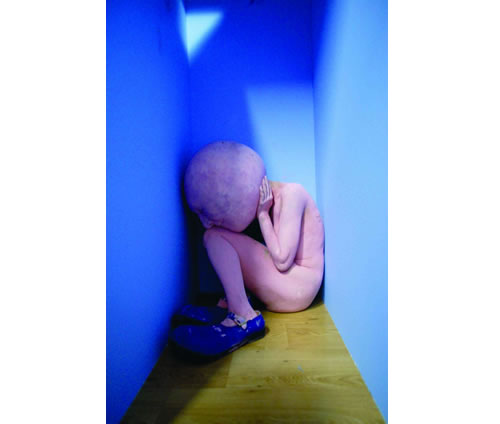
For many contemporary artists, taboos and prohibitions are the sweetest things to explore and play with. Abjection in arts goes beyond a call for an attention. It is the reflection of ego that can be found in the traces of body.
When Andres Serrono�s Piss Christ stirred up National Endowment for the Arts (NEA) and caused artist freedom controversy, other young artists realised that they were be able to provoke and offend people, especially far right neo-evangelist. After the peak of the American dream, grunge generation realised that the promise would never be delivered since the jobs were outsourced to developing countries and the figure of young Yuppies entrepreneur became just an illusion.
The most influential concept of abjection would be Julia Kristeva�s book, Powers of Horror: An Essay on Abjection. She examined the idea that as we felt the last scum of milk, it connected mother and a child and made us aware us of our own mortality, primal moment trauma that we were not bounded and protected from mother any more. These bodily fluid and abject objects universally reminded us of it. Since then abjection became a buzzword of the artists and curators who read the book.
The most important exhibition was Helter Skelter: L.A. Art in the 1990s, which explored the darkness of Los Angeles with sex and violence. It featured the key artists such as Paul McCarthy, which strongly connected with the generation and Mike Kelly who questioned the value of family relationship.
Female artist like Kiki Smith depicts human productivity and asks whether women are stuck in that role. Orlan, a French artist, she transforms to be a perfect woman by going several cosmetic surgeries and becomes a monster herself. While male artist such as Takashi Murakami, Matthew Barney and Chapman Brother explore our estranging human bodies with fantasies and surrealism.
Some uses waste products to examine the modern world, for example, Austrian group Gelitin (Gelatin), Jessica Stockholder, Sarah Sze, Janine Antoni, John Miller, David Hammons and Tom Friedman.
It had a ripple effect on pop culture as well. Kurt and Courtney, for instance, she was a new role model against divas in those days. Alexander McQueen did the same to fashion industry by not embracing model body but irritating notion of body reception. Kate Moss was the best example of bad behaviour model. Young girls cannot be controlled now.
The aim of abjection seems to be just to shock the audience but the approaches of these artists, exploring the fragment of bodies and degraded elements, can reveal who we are and object to those stereotypical values in modern society.
This essay is a part of Critical Response Files for Art after Postmodernism class, College of Fine Arts, University of New South Wales.
I think you’ll find Andres Serrono’s (in)famous painting was called Piss Christ not Pissed Christ, but I do like the imagery of a drunken Jesus turning water into wine…
@Stilgherrian Thx for pointing that out. 🙂 BTW, Piss Christ is photography not painting. Keeping correcting each other is the way to go.